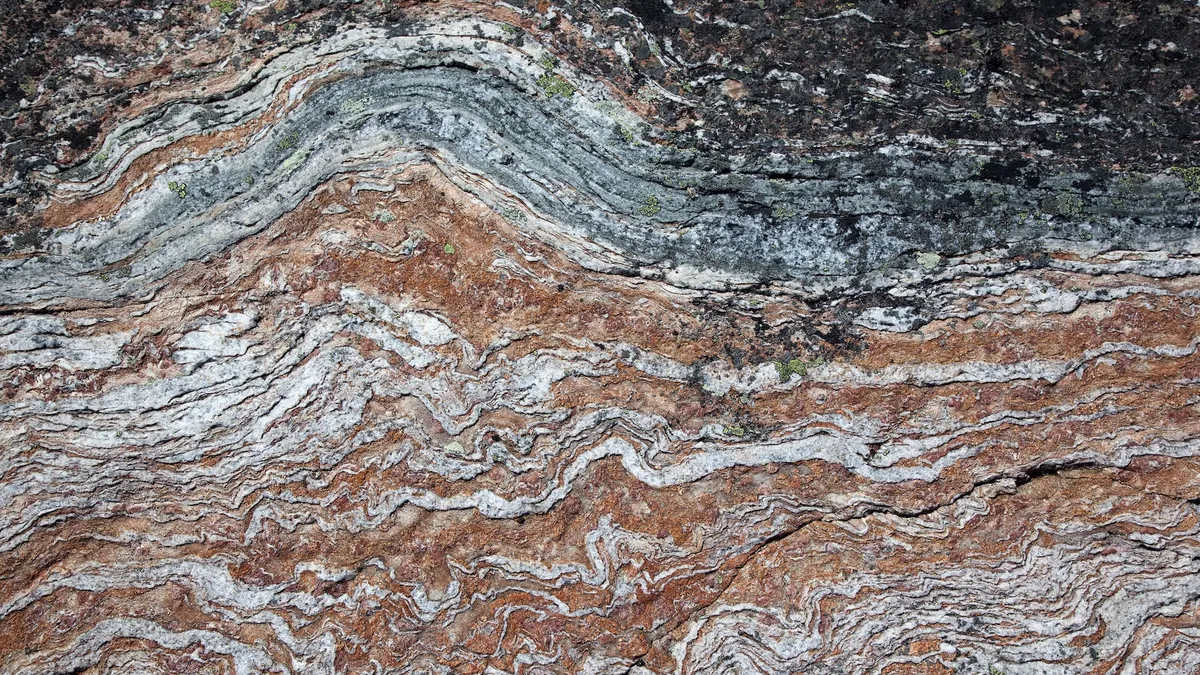
An obscure rock formation on the eastern shore of Canada's Hudson Bay may hold the title of containing the oldest known rocks on Earth, according to a recent study. The analysis focused on the streaky gray rocks from an outcrop known as the Nuvvuagittuq Greenstone Belt, which have been dated to approximately 4.16 billion years ago. This dating suggests that these rocks are remnants from the Earth's earliest crust, formed during a time when our planet was only about 4.57 billion years old.
The research, published on June 26 in the journal Science, employed two sophisticated methods that utilized the decay of radioactive isotopes to ascertain the age of ancient magma trapped within the rocks. This study significantly reinforces previous, albeit controversial, findings by the same team of scientists. If verified, these results could provide a unique glimpse into our planet's ancient history and the geochemical conditions under which life first emerged.
Co-author Jonathan O'Neil, a professor of environmental science at the University of Ottawa, expressed confidence in the age of the rocks, stating, "The volcanic rocks have to be at least 4.16 billion years old or older; I would argue that the best age for them is 4.3 billion years old." This assertion positions these rocks as potentially the oldest known on Earth, an intriguing claim given the absence of any known rocks older than this.
The early stages of Earth's formation were marked by extreme heat, as the planet began as a molten ball of lava. Over the first 600 million years, during the Hadean eon, pockets of solid rock began to develop. This period was fraught with turmoil as Earth was bombarded by asteroids and experienced catastrophic impacts, including one from the protoplanet Theia, which ultimately led to the formation of the Moon.
By around 3.8 billion years ago, Earth's surface began to splinter into tectonic plates. These plates engaged in subduction, recycling material into the Earth's interior or forming vast mountain ranges and oceanic trenches. As a result, many of the rocks we see today have been chemically altered by intense heat and pressure over billions of years. However, some regions, far removed from tectonic plate boundaries, have preserved rocks that have remained unchanged for eons, including the Nuvvuagittuq Greenstone Belt.
Scientists generally agree that the NGB is at least 3.8 billion years old. However, a study published by O'Neil and his colleagues in 2008 posited that the NGB could be as old as 4.3 billion years, suggesting it housed the oldest rocks on Earth. This claim was met with skepticism from other geologists, who pointed out potential flaws in the research methods used for dating.
Traditionally, zircon, a mineral known for its chemical stability over billions of years, is used to date ancient rocks. However, the volcanic rocks in the NGB lack zircon, compelling scientists to rely on the decay of samarium into neodymium for age estimation. This method presented challenges due to the existence of two decay pathways, each yielding different age estimates. The first pathway, samarium-146 to neodymium-142, has a half-life of about 96 million years, whereas the second pathway, samarium-147 to neodymium-143, spans trillions of years.
To address the dating discrepancies, O'Neil's team revisited the formations to identify sections where magma from the Earth's mantle intruded into the primordial crust. Since these intrusions had to be younger than the surrounding rock, they served as a minimum age indicator. The new analysis indicated that both decay pathways of samarium to neodymium revealed a consistent age of 4.16 billion years.
Should further research validate the findings, these ancient rocks could provide critical insights into the conditions that led to the emergence of life on Earth and potentially elsewhere in the universe. O'Neil noted that some rocks from the Nuvvuagittuq Greenstone Belt were formed through precipitation from seawater, which may help scientists understand the composition of Earth’s primordial oceans, their temperatures, and even the atmosphere at that time. Additionally, these rocks could harbor the oldest traces of life on Earth.
Understanding the environmental conditions that could have facilitated the origin of life on our planet is not just a quest for knowledge; it also aids scientists in their search for signs of life beyond Earth, particularly on planets like Mars. As research continues, the Nuvvuagittuq Greenstone Belt may unravel more secrets about our planet's early history and the potential for life elsewhere in the cosmos.